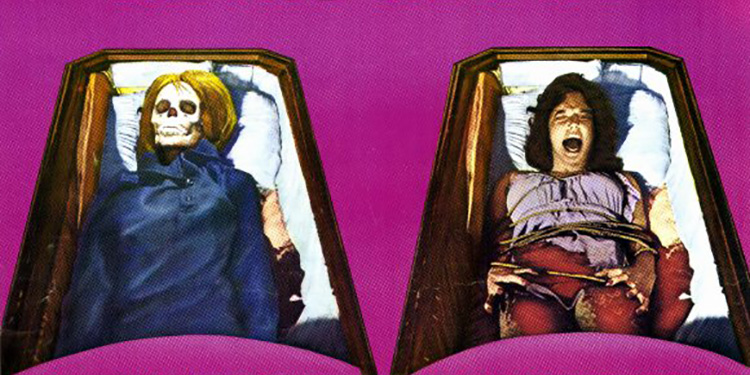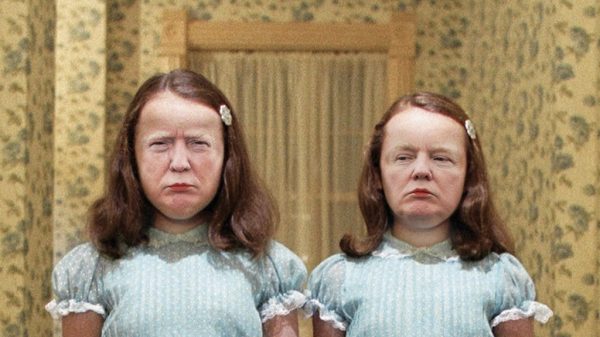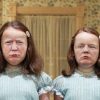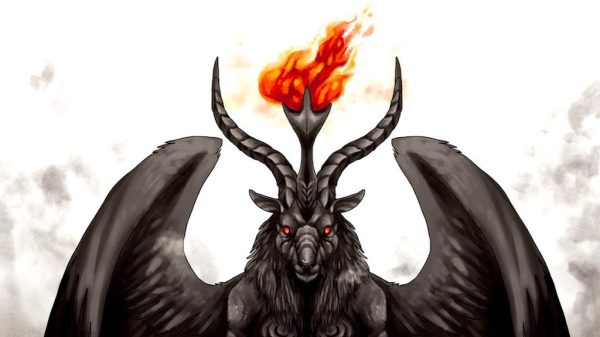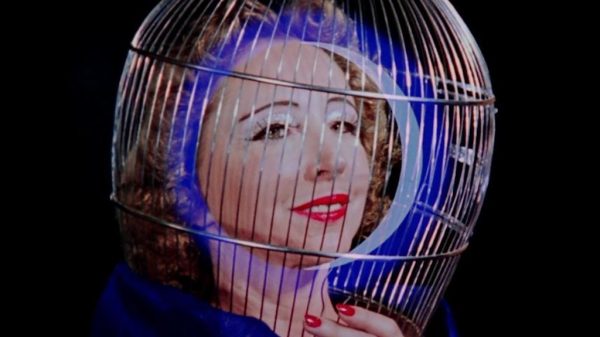Movies and dark music go hand in hand. The list of bands who take their inspiration from horror films is legion. Doomsters like Electric Wizard, Beastmaker, and Uncle Acid & The Deadbeats literally wear their occult horror influences on their sleeves (except for Trevor from Beastmaker, who refuses to wear sleeves).
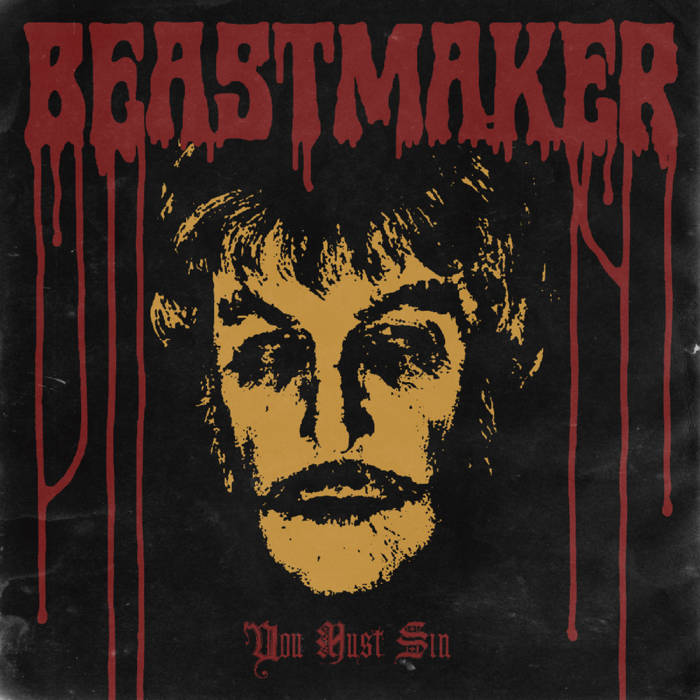
As a child growing up, Friday nights for me revolved around Sammy Terry’s “Nightmare Theater,” a local television broadcast that highlighted an endless parade of horror movies. It was there that I cut my teeth on the iconic names of Hammer, Lewton, Lugosi, Karloff, Chaney, Price, Lee, Cushing, and Romero. From there my love for the macabre grew and horror became my go-to comfort food for the weary mind.

As an occultist who practices traditional witchcraft, some “horror” ceases to be comfort food and takes on a whole new level of meaning that doesn’t necessarily exist for the casual viewer. When it comes to occult horror, I am a more stringent judge of films in terms of authenticity. With that in mind, I’ve compiled a list of my favorite movies dealing with the occult and witchcraft. While I don’t expect every cinematic stab at the subject to be as literal as some of the films on this list, I need to find something within each that resonates true, whether it is theme or imagery, and I believe each film here does that. Furthermore, I say my favorite films, because like all art, while these may resonate with me, they may not with others. Nevertheless, I think each objectively justifies their place on any list of best occult films.
- BLACK CANDLES (A/K/A LOS RITOS SEXUALES DEL DIABLO)
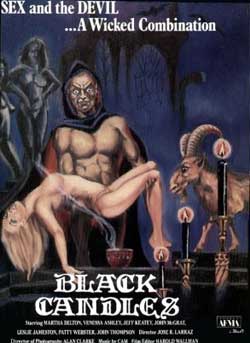
I’ll begin this list with a trilogy of sexploitation flicks. The 70s and 80s were awash with B-movies full of naked Satanic witches doing naked Satanic witch things. Although Jesus Franco and Jean Rollin are the undisputed masters of this subgenre, none of their films arise to a level of authenticity that would garnish them a place on this list (nevertheless if, like me, euro-bush and gothic storytelling are your thing, seek out their films). Rather, there are a few films that they clearly inspired that deserve a peek like this 1982 Spanish film, which is easily one of the most extreme entries into the sexploitation occult genre. Black magic, loads of nudity, and ritual sex with a goat (yes, you read that right) round out this film. I’m picking it because it depicts ritual sex without hedging any bets, but also because any film that depicts a witch fucking a goat is worth a look for the sheer antinomian insanity of it all.
- THE DEVIL INSIDE HER
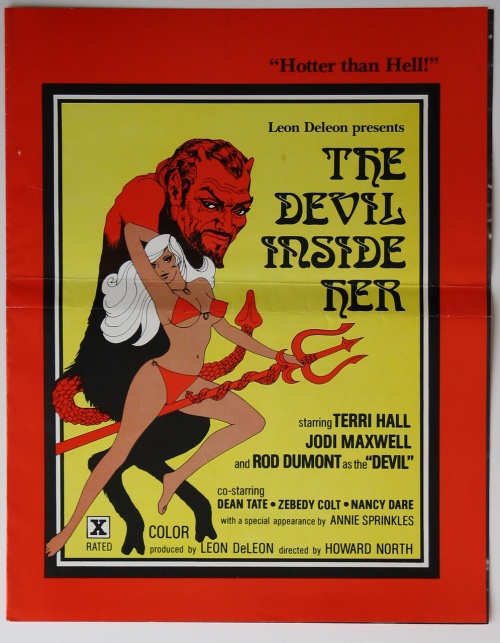
A 1977 pornographic film that fulfills the desires of any horror sexploitation fan who wished the films of Franco or Rollins had cum shots. Shot in the golden age of porno, this movie benefits greatly from passable acting and an actual script about a woman who sells her soul to the Devil in exchange for the man she loves. What is most striking though, and why this movie is on this list, is how perfectly pagan the atmosphere of the film is, right down to the sex, which is as primal and feral as pagan sexuality should be. This is hot, earthy stuff and occult sexploitation done right.
- THE VIRGIN WITCH
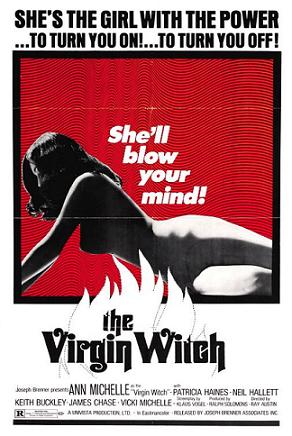
Rounding out the occult sexploitation portion of this list is this 1972 British movie. The film tells the tale of a young model enticed to a country estate where a coven of witches intends to use her for a virgin sacrifice. Like so many other films of this type, it is awash in nudity and sex, but what sets this one apart from the pack is the story it tells of the titular witch’s awakening into power. It may not be as nuanced as “The Witch,” but for all of its salaciousness, there is a tale to be told here about female empowerment and the occult.
- NECROMANCY (A/K/A THE WITCHING)
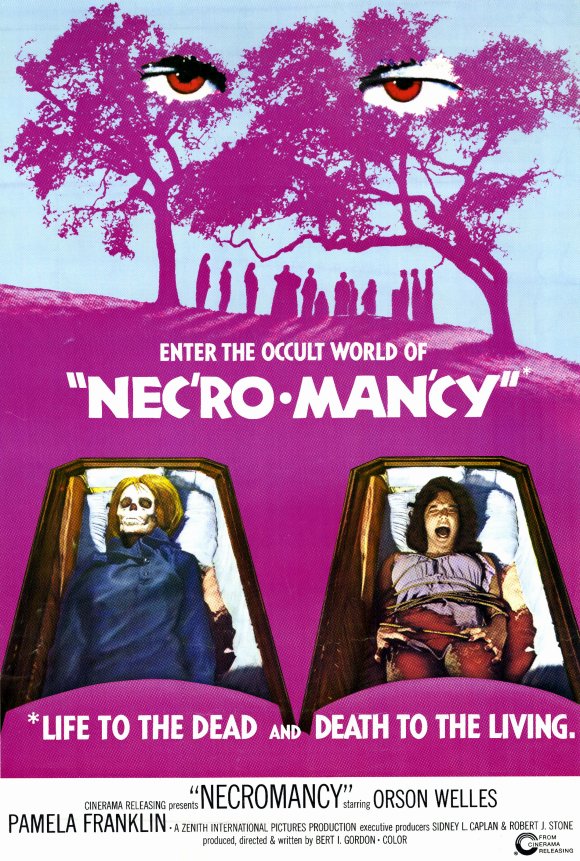
This one is a bit of a personal favorite, simply because I saw it when I was initially finding my way on the crooked path, and so many of the images in the film have stayed with me. Released in 1972 and clearly stealing more than a few ideas from the far superior “Rosemary’s Baby,” the film tells the story of a doe-eyed innocent wife who follows her husband to a town ruled by witches. The husband’s boss and coven high priest, played by Orson Welles, of all people, needs the woman for her powers of necromancy. The film is certainly no masterwork, but there is an attractive sheen to the movie (one later echoed in “The Love Witch”) and more than a few seductive images of witchcraft in practice, as well as a true-to-life speech about the gods and ways of witchcraft.
- THE DUNWICH HORROR
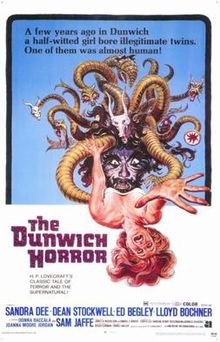
For all of the influence H.P. Lovecraft has exerted over dark art, his writings have yet to receive a proper cinematic expression. This 1970 film makes the list because, despite its ill-advised foray into late 60s psychedelia, there are still plenty of pure Lovecraftian elements here to recommend it. Dean Stockwell plays protagonist Wilbur Whateley, who seeks out the Necronomicon in order to perform a ritual to bring back “The Old Ones.” As the film progresses we find that Wilber is of suspect and “corrupted” lineage, setting him apart from the other town folk. The movie climaxes in a fantastical hilltop ritual that remains one of my favorite moments of occult film history. While not perfect, the pursuit of grimoires, magical bloodlines, and the ritual invocation of elder gods makes this one a perennial favorite.
- SIMON, KING OF THE WITCHES
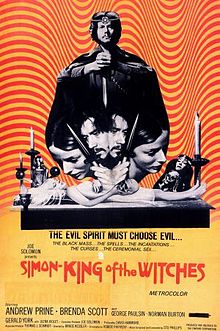
One of the weirder films in a list of weird films. What makes this 1971 film weird is not necessarily it’s narrative, but it’s mash-up of occult ideology, satire, horror, and hippie-era kitsch. It can be a frustrating watch if you can’t handle a film that is both serious and taking a piss at the exact same time. The film basically follows the exploits of Simon, a burned-out ceremonial magician as he passes through the pretenses and shallowness of upper-class bohemian culture in the late 60s and early 70s. The “dream” of the 60s is dead and all that is left is drugs and parlor games for the bored patrons of Simon’s world. At the heart of the film lurks the question of what is a sincere magician to do on his quest to divinity when all he is good for is Tarot readings and a potion here and there? The film’s answer is rather grim, but it’s freakishly fun getting there.
- ALUCARDA
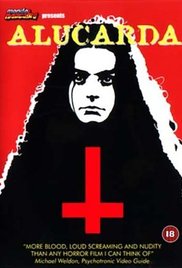
I know I’m supposed to prefer Ken Russell’s “The Devils” when it comes to films about the serpent Satan slithering into convents, but for all the goddamn talk, talk, talking, and more talking in that film, this 1978 movie cuts to the quick with pagan rituals, lesbian sex and blood, blood and more blood. Alucarda is an orphan raised by nuns who becomes possessed by the Devil and gives a giant bloody middle finger to the nuns and their god in the process. What elevates this film above other nunsploitation flicks is that as with the best parts of José Mojica Marins’ “Coffin Joe” films, there is an incredibly clear and strong message of left-handed path rebellion against authority here that transcends its genre trappings.
- LUCIFER RISING
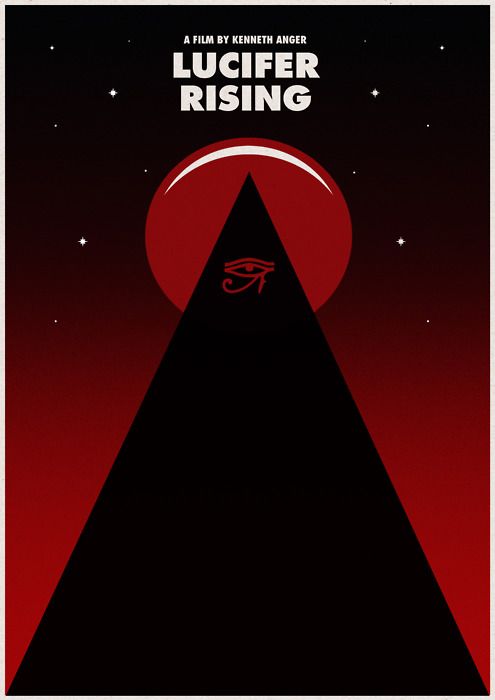
Thelemite Kenneth Anger’s film about Isis and Osiris bringing forth Lucifer to usher in a new Luciferian age is based on the writings of Aleister Crowley, so of course, it’s going to be on this list. Anger’s experimental style makes for a challenging viewing, but like the esoteric itself, the meaning is found buried under symbolism and fragmentary imagery. For the novice, the film offers an occult rabbit hole to fall down and explore, but a true appreciation of Anger’s work grows in proportion to one’s own knowledge of the subject, making it a work to revisit repeatedly as one progresses along the path.
- THE CRAFT
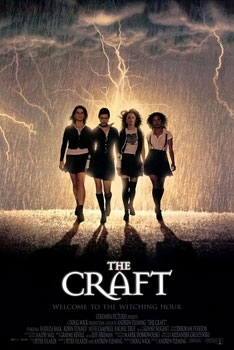
From the most experimental film on this list to the most conventional. The Craft is the most successful mainstream film thus far to be centered around actual true-to-life witchcraft. The story of four high school students who practice Wicca (“we are the weirdos, mister”) is part teenage drama, part horror, and part moral fable for young witches. Like all things mainstream, it’s easy to poke fun at, but only a true curmudgeon can’t find some enjoyment in this one. While not everything in the film is accurate (who the fuck is Manon?), it’s still got enough material that will resonate with practicing witches, particularly Wiccans.
- NEON DEMON
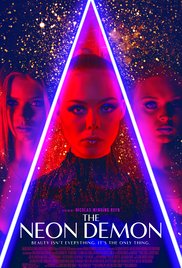
Imagine if Nancy from “The Craft” ended up becoming a make-up artist working in the LA modeling industry. This Nicolas Winding Refn film was taken to task by some for both its blood-soaked portrayal of the modeling industry as well as its cold, sterile atmosphere. While non-initiates saw nothing more than a slick glossy gross-out flick, I found an incredible depiction of ritual and witchcraft in this Lynchian-like update of “Susperia”. Inherent modeling critique aside, the real heart that beats underneath the sterile, stylish surface of this film is the primal power of woman as witch, something that the fashion industry attempts to both stifle and commodify.
- NIGHT OF THE DEMON
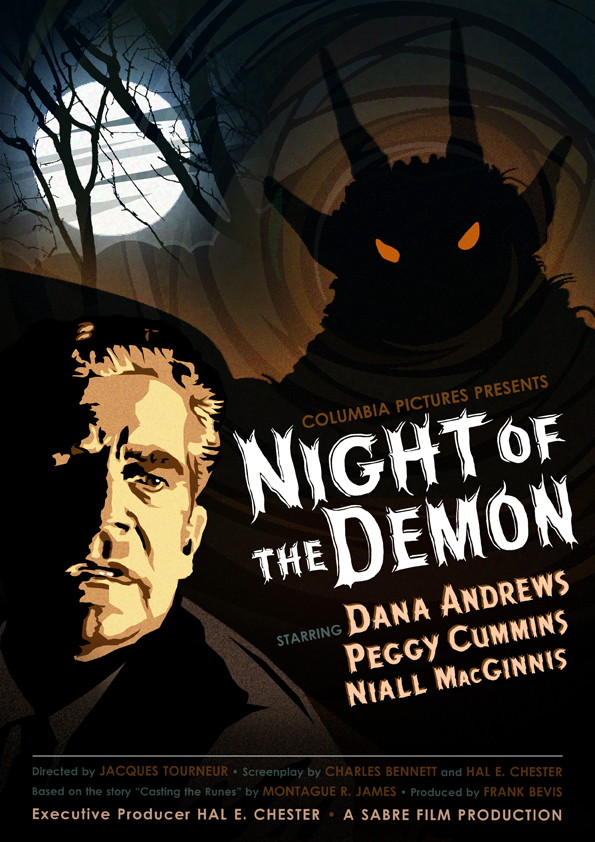
Made in 1957, this film still towers over most occult horror movies. The film’s protagonist, Dr. John Holden, is a skeptical rationalist who has come to England to attend a convention with the aim of debunking the paranormal. Holden’s foil, Dr. Julian Karswel, is a professor who may or may not be the head of a witch cult. The adversarial interplay between the two allows the film’s central thesis that there are limits to science, as well as what we can know with our rational mind alone, to unravel at a pace and in a manner that is deeply satisfying. As Holden comes to believe, so too does the audience. This is a film that will appeal to those of us who pledge our allegiance to science, but who also allow that there may be more to the universe beyond the realm of our feeble understanding.
- THE NINTH GATE
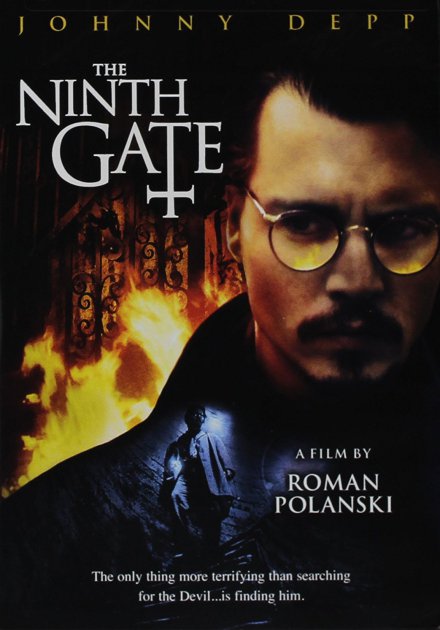
Roman Polanski is no stranger to the occult. Aside from rumors of his own involvement in the late 60s, the esoteric is a re-occurring theme in many of his works. Of course, I can’t not mention “Rosemary’s Baby,” a film about the conception and birth of Satan’s son. That film doesn’t make this list, because unlike “The Ninth Gate,” the occult in “Rosemary’s Baby” is used strictly as an element of horror, bearing little resemblance to actual practice (tannis root? Really? Couldn’t have gone with wormwood or mugwort?). With “The Ninth Gate,” though, Polanski crafts a thriller around the pursuit of an ancient grimoire that offers a window into the obsessive nature of the most dedicated occultists. Upon its release, the film was incorrectly sold as a horror movie to many a disappointed audience, but since that time it has found a home within the occult community that can easily see themselves in the film’s characters who would stop at nothing to obtain the secrets the film’s elusive grimoire holds.
- THE LOVE WITCH
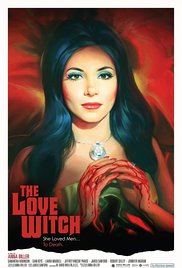
Horror, humor, witchcraft, and feminism blend together in this retro feast for the eyes. The film follows Elaine, a witch who, like Goldilocks in search of the perfect porridge, has a hard time finding the right guy (this one’s too clingy, this one’s too aloof). Her quest leads to obsession and murder. Along the way filmmaker Anna Biller dishes up scathing critiques of the sexual politics in both the pagan community and society at large, as well as plenty of moments of pure magic; cinematic and otherworldly.
- THE CITY OF THE DEAD

This 1963 film starring Christopher Lee is one of the finest horror films about witchcraft ever made. The plot centers on a Massachusetts coven who seek a sacrifice to maintain the immortality of the group’s matriarch. Much like “The Wicker Man”, I can’t help but watch this film and root for the “bad guys” to prevail. Although the film takes plenty of creative license with the subject of witchcraft and witches, it also contains many elements that will be familiar to cunning folk, particularly those who practice traditional witchcraft, plus it has Christopher Lee.
- THE BLOOD ON SATAN’S CLAW
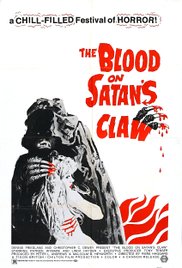
This 1971 film seems to grow in stature with each passing year. Set in 18th Century rural England, the film examines the intersection and collision of reason, superstition, paganism, and Christianity. In the film, an evil force imposes itself on a village, whose children are most susceptible to its allure, in part because it offers freedom from the oppressiveness of the Church and community. As if those themes were not enough to earn it a spot here, the earthy atmosphere of the movie really pushes it over the edge. The film feels exactly what I imagine 18th Century rural England felt like when the Devil still roamed the land and witches met secretly in groves after attending the day’s Church services.
- BELLADONNA OF SADNESS
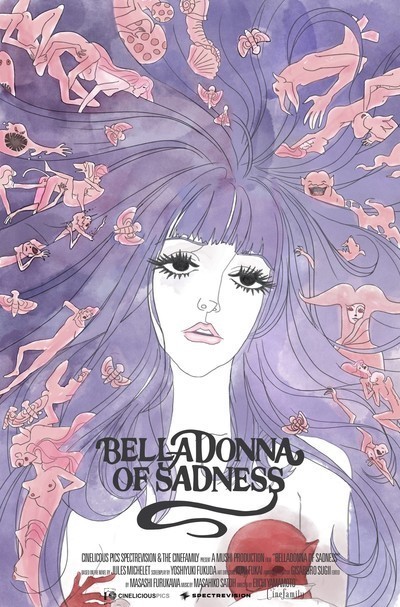
Although originally released in 1973, this film didn’t get an American release until 2016. No words can really describe the power of this fantastical and hallucinogenic masterpiece. In the simplest terms, it’s an animated rendering of Jules Michelet’s “Satanism and Witchcraft” wherein a woman makes a deal with the Devil to gain the powers of witchcraft and upend the ruling oppressive patriarchy. What makes this film soar, though, is the medium of animation, which allows filmmaker Eiichi Yamamoto to free himself from any constraints but those of his mind. What results is a full-blown rendering of witchcraft in the most glorious and splendid fashion. It’s the closest to the visions one receives in trance or in dreamwork that I’ve ever seen brought to life on film.
- A DARK SONG

The most haunting entry on this list, this 2016 Irish film chronicles the performance of the Abramelin operation, an intensive and extensive occult rite that ends in the knowledge of and conversation with one’s Holy Guardian Angel. The film centers on Sophia, a grieving mother whose son was abducted and killed by a group of teenagers in some form of ritual murder. Tormented by the loss, Sophia turns to the occult to find closure, eventually hiring curmudgeonly ceremonial magician Joseph Solomon to guide her through the Abramelin. The film proceeds through the trials and tribulations of the rite itself, as well as the ever-escalating tension between adept and novice. While so many films that deal with the occult focus on the desire for power that such forces can bestow, this film takes a different tact, instead focusing on one woman’s desire for peace, resolution, and wholeness through secret gnosis. The resulting film is a harrowing and emotionally powerful expression of this quest, and far more realistic than so many other films that deal with the use of magick. It is truly a unique movie in that it’s the only film here that does not resort to archetypal symbols, fantasy, or horror tropes to explore the subject of the occult, making it the only non-documentary film that I am aware of that realistically examines what it is to be a ceremonial magician.
- HOLY MOUNTAIN
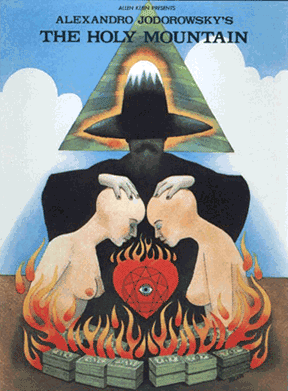
Alejandro Jodorowsky’s masterpiece. There is far too much to this film to condense into a paragraph here. At the heart of it is the mystic’s journey as told through different manifestations of occult archetypes like the Tarot, which Jodorowsky is well known for his commitment to (his book “The Way of Tarot” is one of the finest on the subject). The film is a virtual catalog of mystical practices and the various transformations one goes through on the path to gnosis. What more can be said? If you haven’t already consumed this film over and over again…to quote the film’s alchemist “You are excrement. You can change yourself into gold.”
- THE WICKER MAN
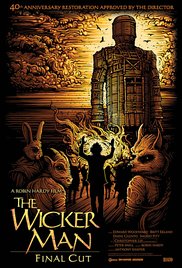
Oh man, what can I say about this film? Should it be that even when I saw it at a very young age I never thought of it as a horror movie, and secretly cheered when the Christian cop was burned in sacrifice? Should it be that one of my first sexual awakenings was seeing Britt Ekland doing her pagan dance of seduction in an Old English Inn? Or should it be that when I saw this movie, I knew that the practices of the inhabitants of the island of Summerisle were exactly the sort of thing that I believed in? Until the movie that sits at number one on this list came out, this was THE movie for me. Earthy, funny, erotic, and dark, this 1973 film has it all and then some. Sure “Apocalypse Now” is probably objectively better, but for me, personally, “The Wicker Man” was my all-time favorite film until…
- THE VVITCH
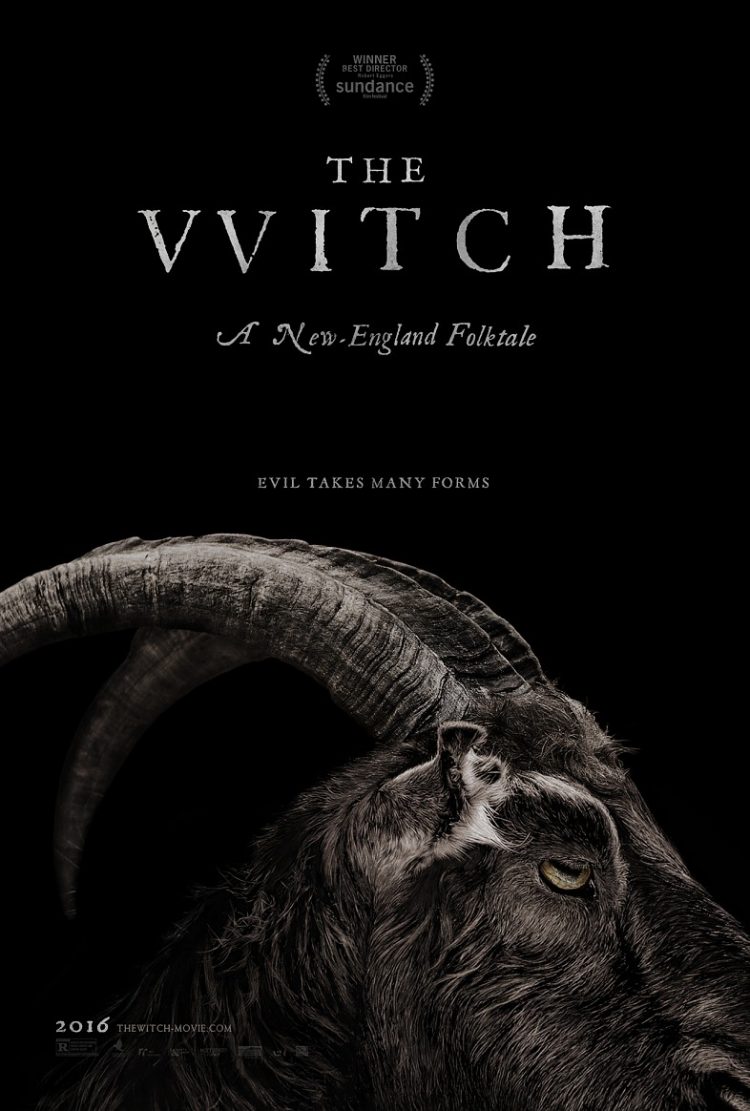
The Satanic Temple’s Jex Blackmore called this 2016 film “a transformative Satanic experience”, and I couldn’t agree more. No matter how many times I watch this film (and it’s been far too many to count), I still get a transcendental rush during the movie’s final sequence. Set in 17th Century New England, the film portrays the slow disintegration of a puritan family who has been banished from their village due to the result of a disagreement over the “pure and faithful dispensation of the Gospels”. Initially hopeful to create a new life for themselves in the wilderness of the New World, things take a turn as dark forces insinuate themselves into their homestead. Director Robert Eggers crafts this film with painstaking detail, taking the viewer directly into the godforsaken world of its inhabitants where crops spoil, fetch-spirits appear as game, and the family goat may well be The Adversary Himself. Packed with themes of religious oppression, patriarchy, superstition, the Devil as liberator, and just good ol’ fashioned traditional witchcraft, the film feels far deeper and richer than its mere 93 minutes running time would seem to allow. What makes this a “transformative Satanic experience” is that despite all of the film’s oppressive horror and darkness, there remains a light in the darkness, and that light’s name is Lucifer. Regardless if you perceive Him as actual or archetypal, He is there to guide thy hand.

